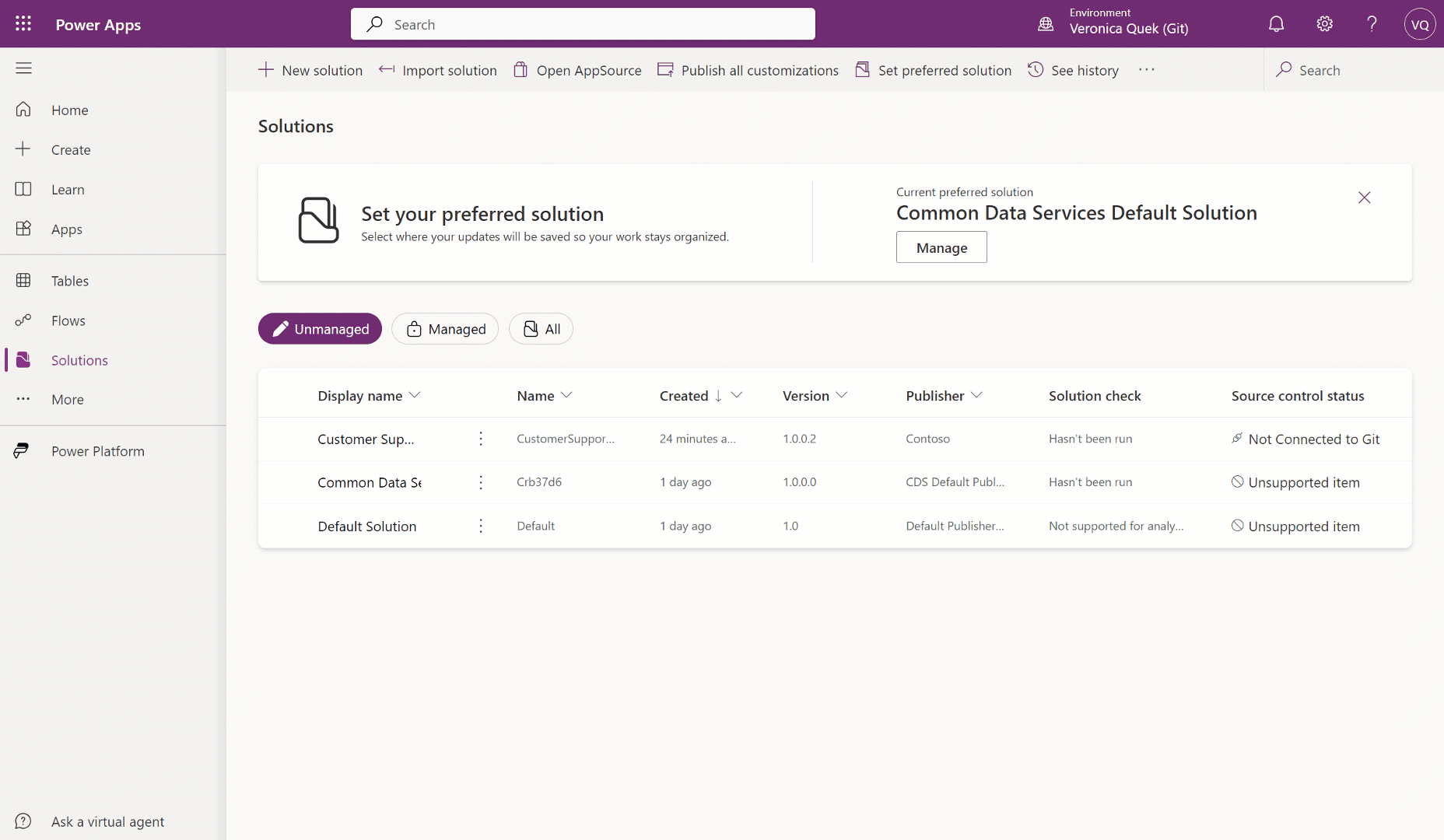Introducing Git Integration in Power Platform (preview)
Now in public preview, Git Integration provides a streamlined experience for developers and citizen developers to build solutions together using the same development processes and best practices. Fusion teams are more productive with familiar Git functionality available directly within their environment. This native integration provides faster setup and iterations, developer and feature isolation, change tracking and auditing, version control, rollback, and more.

It just takes a few seconds to connect your Dataverse environment to Git. You can connect and use Git integration within Power Apps, Microsoft Copilot Studio, Power Automate, and Power Pages. You’ll also need access to an Azure DevOps Git repository.

Rollout is in-progress. Git integration is currently available in public geos outside the US. Your environment must be enabled for early access and accessed at https://make.preview.powerapps.com.
As the team develops, Dataverse tracks everyone’s changes. When ready, commit your changes to a branch in the connected Azure DevOps Git repository. A commit link is provided to view the changes within the repository and compare diffs. You’ll notice solutions and solution objects are now stored in human readable formats in the repo.

Professional developers can work in source control while others work in one or more environments. It’s easy to pull others’ changes into other development environments which are connected to the same source code location. This allows team members to build without others editing in their environment and share changes once they’re ready. Connect multiple development environments using the same repo, branch, and folder. Then, in each environment create or import an unmanaged solution with the same name and publisher.
When committing and pulling changes, conflicts may be detected – meaning someone else made conflicting changes to the same object. You’ll need to choose whether to keep the version that’s in your environment or bring the version from source control into your environment. You can also revert changes in the repository, then pull the prior version into your environment.
When the team is ready to deploy to test or production, you can use Pipelines in Power Platform for the release. Building and deploying using developer tools isn’t available yet for this new format.
We hope you enjoy the preview. There are many current limitations and you shouldn’t use this feature in environments or Git folders where you’re developing production solutions. Please leave your feedback below, in the community forums, on social media, or another outlet of choice. We look forward to hearing what you’d like to see prioritized next.
